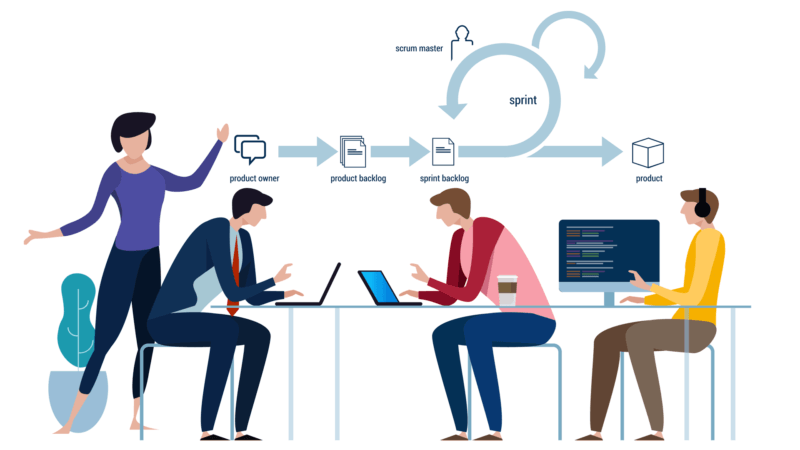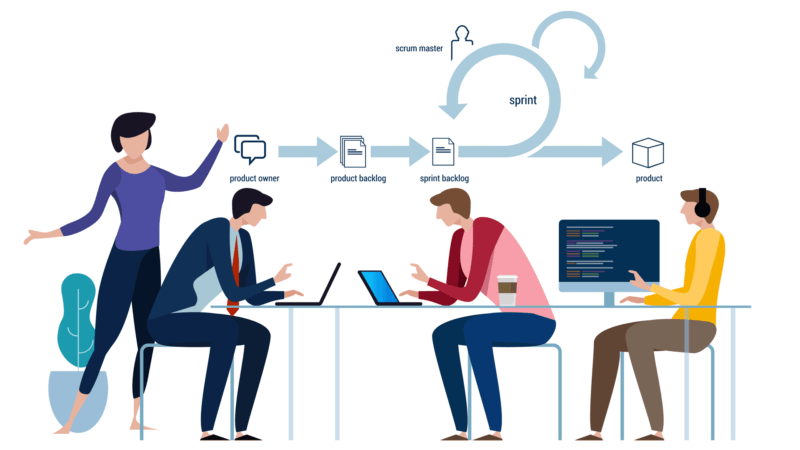
In the early days of the pandemic, the University of Southern California, like many other educational institutions, had to do a swift pivot when it came to one of its most consequential activities of the year: commencement.
Over the course of 3 weeks, the university designed and set up a virtual commencement experience, explained Josh Koenig, co-founder and head of product at WebOps platform Pantheon, which counts USC as a client.
“They built out their own Twitch-stream-like experience, where they’d have an embedded video feed and chat and other messages,” Koenig said, speaking at the recent MarTech conference. “So they could have 27 different channels of this going on for different schools and niches and audiences.”
When the big day arrived, USC got 77,000 people to engage in the experience, significantly more than could possibly come to a normal in-person commencement, said Koenig.
“The first thing the team said to us when we did the recap was ‘We’re doing this again next year, for sure,’” he said. “Because their ability to reach into extended family networks and friend networks and open the experience of commencement to a much wider audience than they ever could have admitted into an auditorium is not something they every want to give up.”
The new normal
Koenig cited the experience as one example of how the digital transformation spurred by the COVID-19 era is driving lasting change.
At a time when so many people’s interactions with businesses are conducted solely online, Koenig urged the audience to step up to the challenge of delivering a great user experience.
“This is the primary, if not only, channel by which you’re going to be able to reach people, certainly you don’t want them to have a poor experience,” he said. “I think we’re going to see many, many more organizations really stepping up, taking this seriously and striving for excellence.”
What that means, according to Koenig, is being able to respond to changes in circumstances quickly, so that your digital communications are always as effective as they can be.
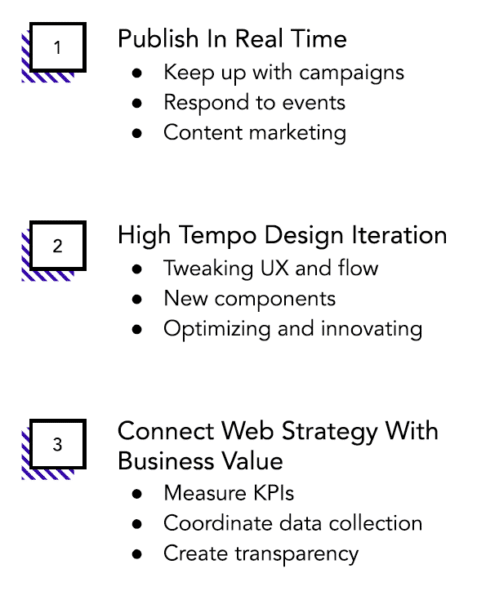
Structure your operations to enable agile marketing
“Can you can you respond in real time to social media? Can you evolve the experience of your website on a weekly basis, or potentially, if necessary, on a daily basis, because you’ve had to pivot a campaign or you’re sending out a new type of communication?,” he asked. “If the web experience component of your stack can’t move at that speed, it’s really a problem.”
“You want to be able to think strategically, you want to be able to act proactively, but a lot of marketing organizations, they’re frankly, just not there, even though they wish they would be, noted Koenig.
Koenig said marketers need to get beyond the idea of the website relaunch — that this big-bang process that occurs maybe once a year is the way to manage your site.
“What happens inevitably is the website’s unveiled, the relaunch happens. And it’s very exciting, it’s a big improvement, you fixed a lot of things, but it’s also incorrect in many ways,” he said. “There’s no way that you’re going to get it all right and stick the landing perfectly. So there’s this list of things that need to get fixed or adjusted.”
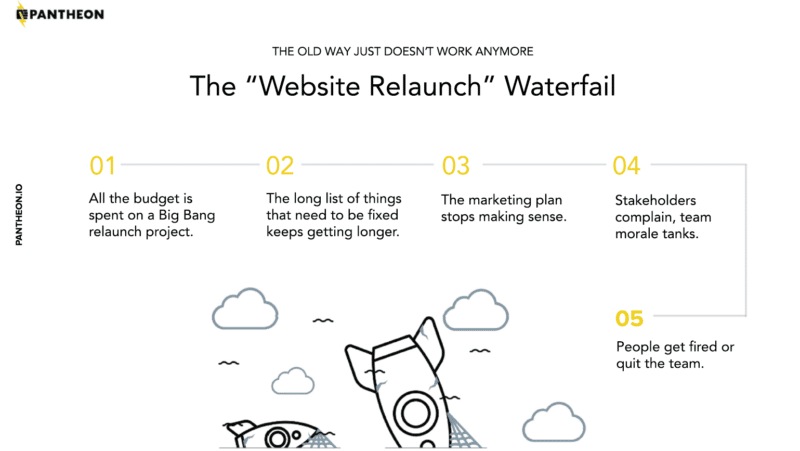
Instead, marketers should invest resources in the ability to iterate early and often — this is achieved by using WebOps. “Rather than thinking of a relaunch that solves all the problems, think about applying a new way of managing and delivering through your web channels,” he said.
It’s not all about technology
One important ingredient for achieving this is a technology stack that can support these iterative processes, but Koenig said you also need to develop clear-cut processes to empower content creators.
“You’re going to figure out how to give people the authority to write something and publish it with minimal overhead or bureaucratic review,” he said. “How do we invest in kind of messaging guidelines and content strategy, so that you can… make content creators really accountable for the impact of what they’re creating, because they know how to be on brand.”
Accountability goes hand in hand with analytics, so that you can steer each iteration toward your big-picture business goals.
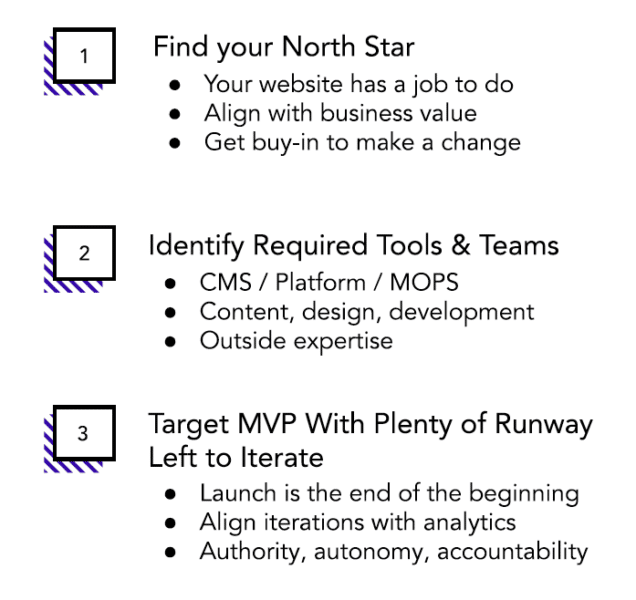
“Ultimately, the purpose of all this is that you connect the web strategy with the business value. Your website has a job to do — you have to decide what that job is, ” Koenig said. “And there’s lots of stakeholders for a flagship website for the public face of your brand or your company. But you really got to figure out what’s the most important thing, and then start to measure that and and align your activities around driving that.”
The post Beyond the relaunch: Evolve your web strategy toward regular iterations appeared first on Search Engine Land.
Source: IAB

